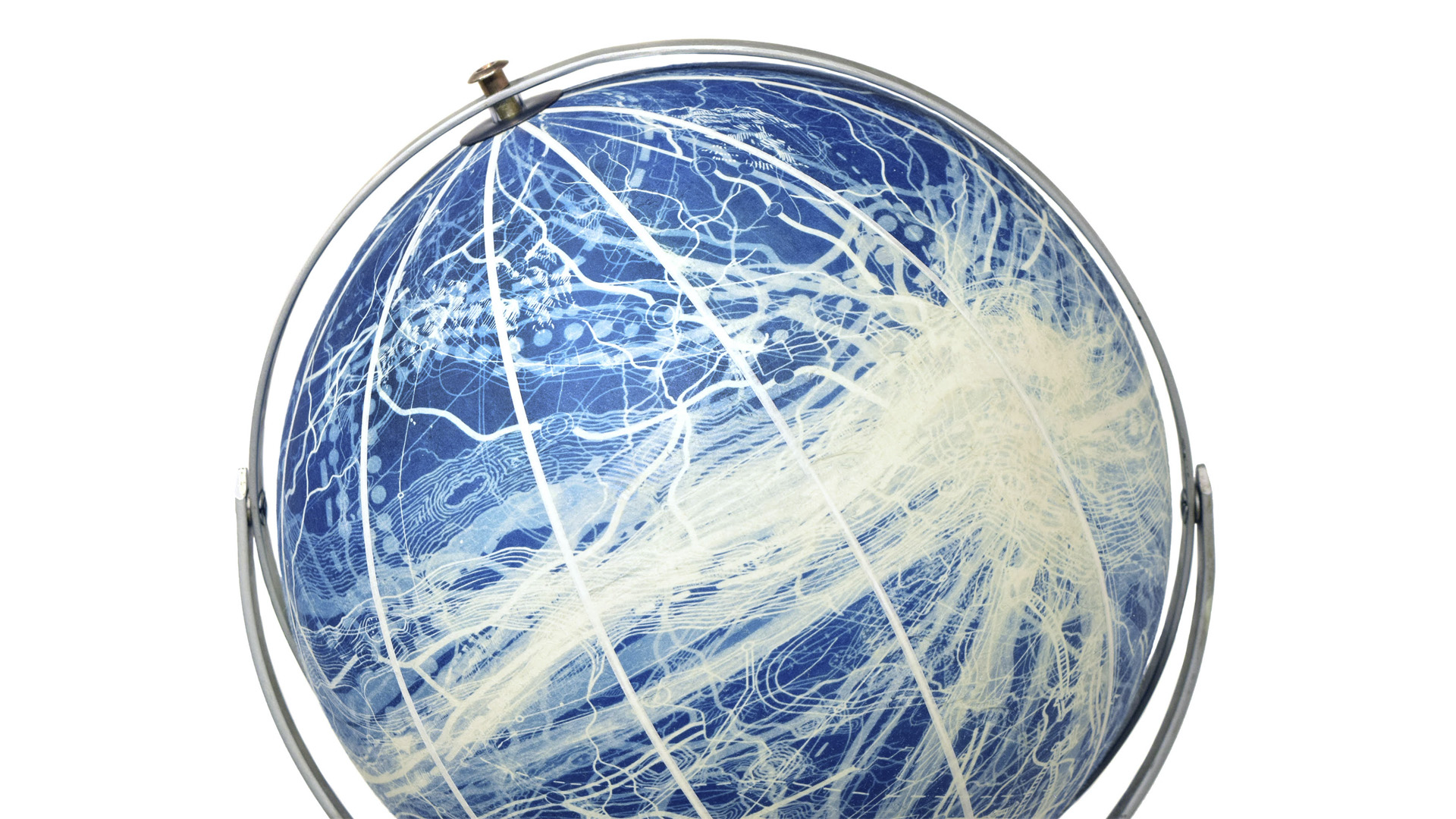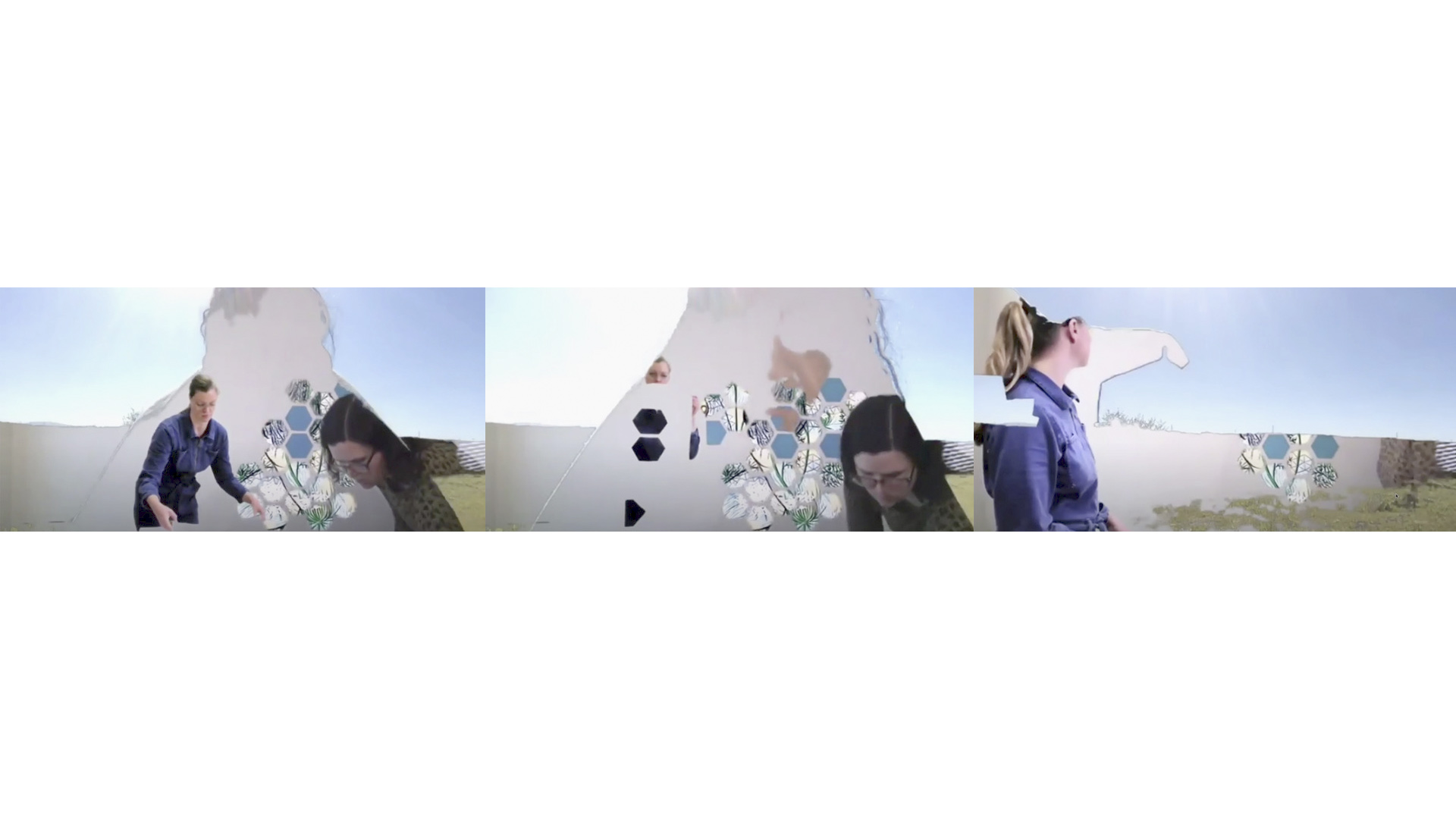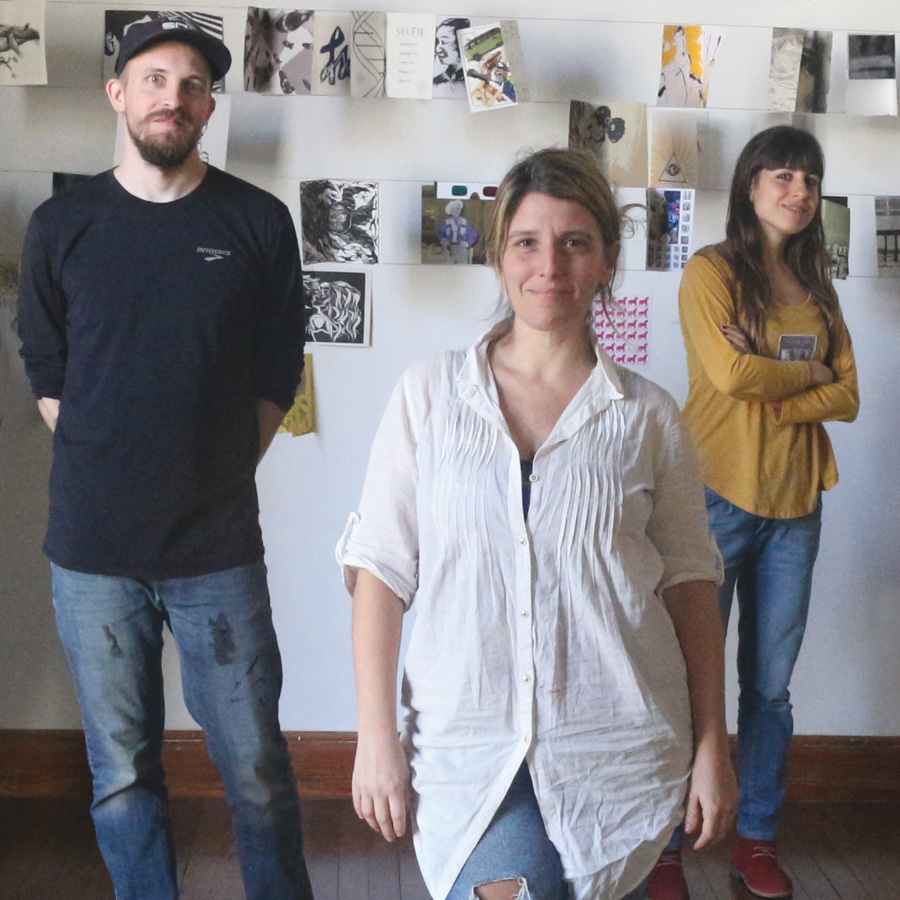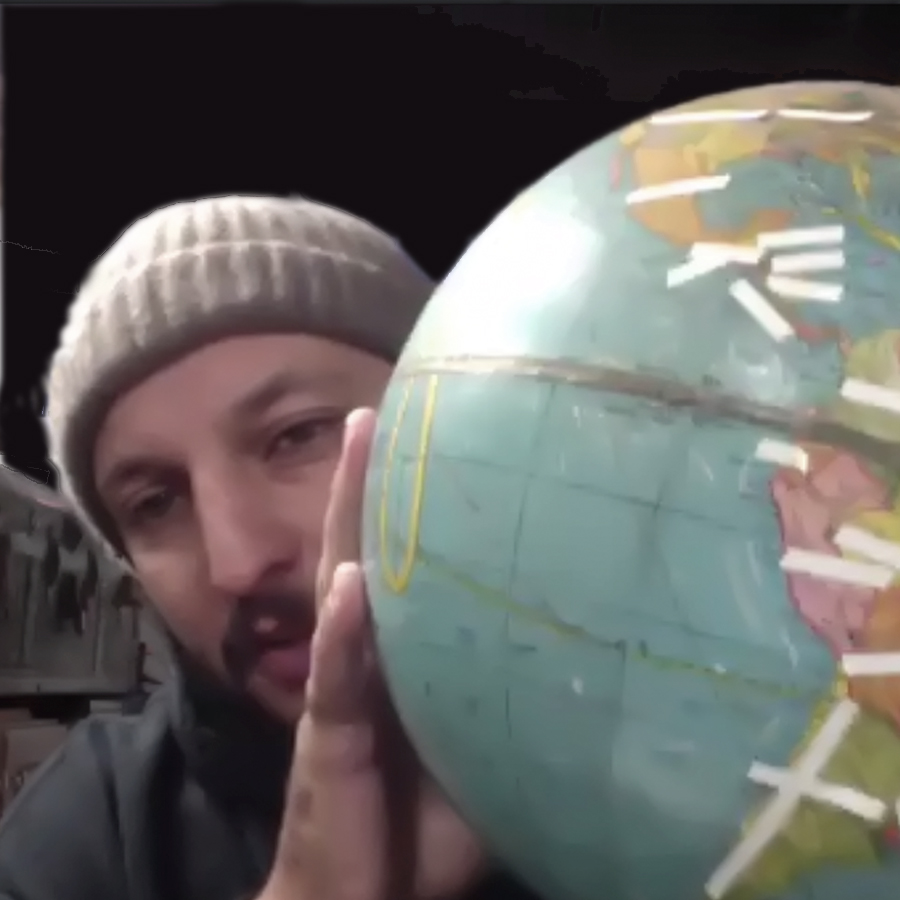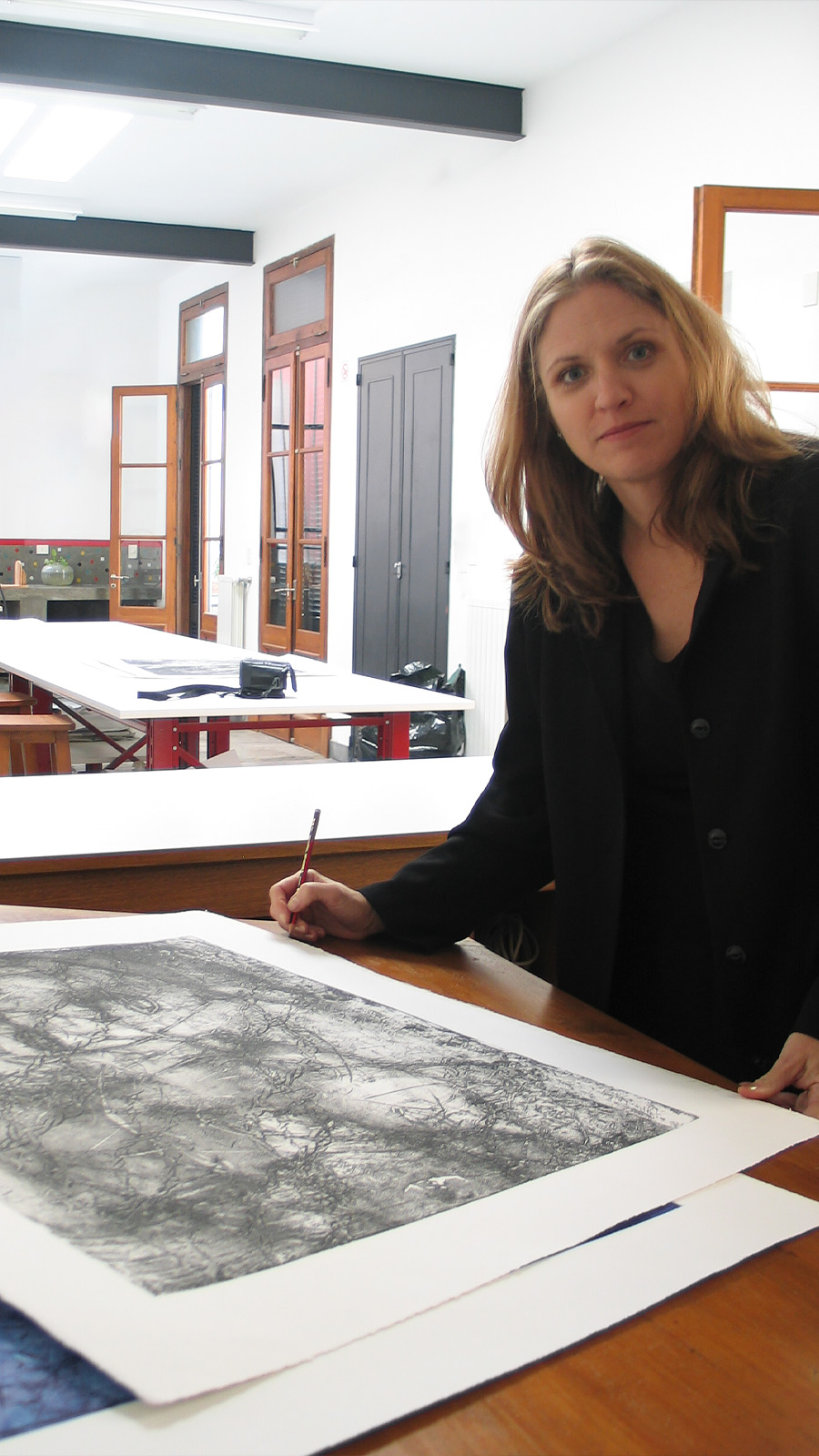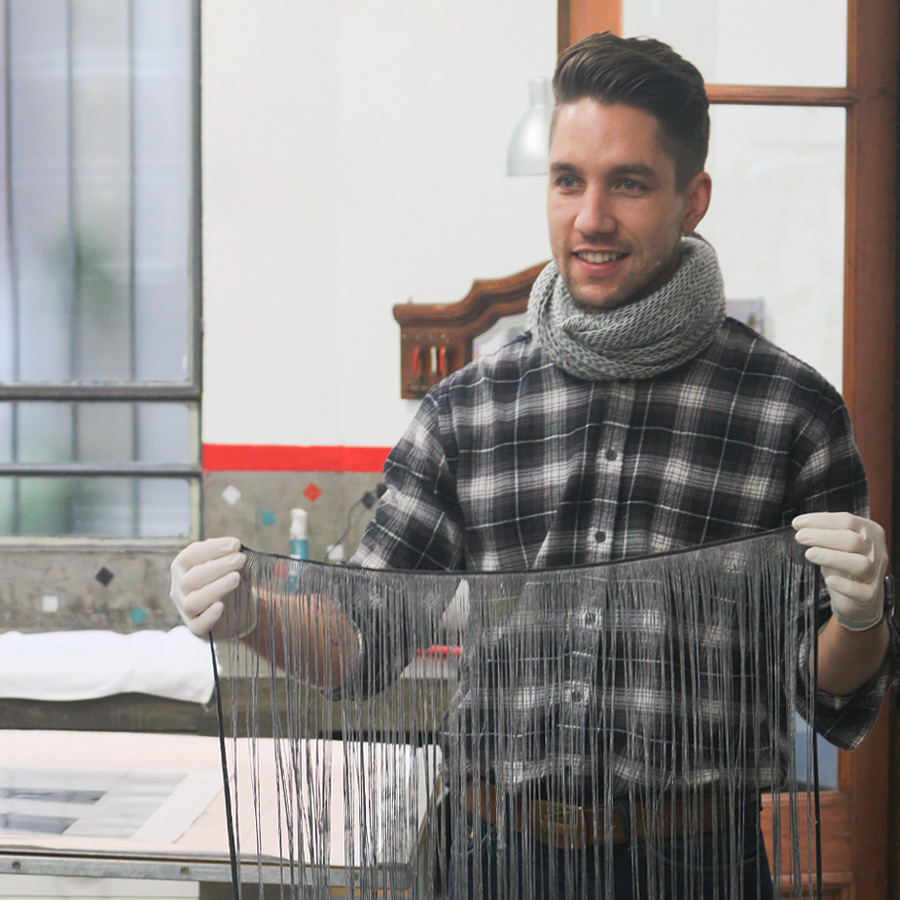Artists
United States of America
Susanna Crum
Together Apart: #Frontera
10.02.21 03.03.21
Susanna received her MFA and MA in Printmaking with minors in Sculpture and Intermedia from the University of Iowa, Iowa City, and her BFA from the College of Architecture, Art and Planning at Cornell University, Ithaca, NY. Her work has been featured in international and national exhibitions at venues such as Museu do Douro in PortugaL, Nicole Longnecker Gallery in Houston, 1078 Gallery in Chico, Manifest Creative Research Gallery and Drawing Center in Cincinnati, the Kentucky Museum of Art and Craft in Louisville, and the Liu Haisu Art Museum in Shanghai, China.
Susanna returned to her hometown of Louisville, Kentucky to start the city’s first shared printmaking workspace, Calliope Arts Printmaking Studio & Gallery, with fellow artist and partner Rodolfo Salgado Jr. Since 2015, she has taught printmaking as an Assistant Professor at Indiana University Southeast, New Albany, IN, and as the Associate Director of Calliope Arts.
ARTIST´S STATEMENT
Susanna Crum conducts research-led projects that investigate maps and printed ephemera as social artifacts at the intersection of past, present, and future.With cyanotype, lithography, video, and sculpture, Susanna merges digital and analog technologies and emphasizes print media’s roles in maintaining relationships – and erasures – between people and place. Her multilayered images combine community-based research with archival materials like letters, maps, newspapers, and oral histories, and propose an interpretation of place in which past and present are concurrent and vital.
“ ‘The process of drawing’ says Crum, ‘allows for detailed study of maps over time.’ The landscape we know, or think we know, has been drawn and redrawn over time, not least of all by us, the viewer. Each of us carries in our minds a series of maps: how to get our child to school the quickest, where a particular shoe repair shop is, a quiet place to take an evening walk. But such maps are generalizations; all maps, in truth, are generalizations, a vague sketch. One need only look at a Rand McNally to see where deserts lie, or farmland, or even burgeoning housing developments in the suburbs as enormous white spaces. As far as the map is concerned, there is simply nothing there to make a legend of.
But what Crum surely intends us to think is that the space in the maps is filled by our imaginations, the source of all legends. To map our city is a way to pinpoint a place where something significant happened. Such maps occur in the past: Here was my first kiss, here where my father was buried, here where I first saw a bald eagle. These are the survey markers of our lives.
A map, though, is also about the future: Here is where I need to be for my vacation next summer, the meeting tomorrow, the job interview next week. Or, as is often the case with us, here is the prettiest route, a drive through overhanging trees, with an occasional view of the sky.
‘A city is many worlds in the same place’ writes Rebecca Solnit, and this is precisely because there are so many of us making maps. The world itself, coupled with our imagination, is the only map we will know. Were we to combine every map of the mind, as Crum suggests with the ever-changing video or the cyanotype resembling geology as much as cartography, we might, as William Blake suggests, see the world as it truly is: infinite.”
Extract from The Map is Never the Country: Susanna Crum’s ‘Watershed Globe Project’ by Sean Patrick Hill | 2020
BIO
Susanna Crum
1986 Louisville, Kentucky
Lives and works in Louisville, Kentucky
STUDIES
2012 | Master of Fine Arts with Honors, University of Iowa, Iowa City,USA
2008 | Bachelor of Fine Arts, Cornell University College of Architecture, Art and Planning, NY,USA
2006 | Semester abroad, Cornell University College of Architecture, Art and Planning, Rome, Italy
EXHIBITIONS
2020 | The Watershed Globe Project (solo exhibition), Carnegie Center for Art and History, Indiana, USA
2020 | Found Fictions, two-person exhibition, Starfangled Press, North Carolina, USA
2019 | The Worth of Water, Davis Gallery, Geneva, New York, USA
2018 | The Mildred Complex(ity): From the Archives of Mildred’s Lane, Narrowsburg, New York USA
2017 | 16th Lessedra World Print Annual, Lessedra Art Gallery, Sofia, Bulgaria
RESIDENCIES
2019 | Kunstnarhuset Messen, Ålvik, Norway
2018 | and 2019 Mildred’s Lane, Beach Lake, PA
2017 | Kala Art Institute, Berkeley, CA, USA
2016 | Edinburgh Printmakers, Edinburgh, Scotland
AWARDS
2021 | Summer Faculty Fellowship in Research, Indiana University Southeast, New Albany, Indiana USA
2019 | Artist Professional Development Travel Grant, Great Meadows Foundation, Kentucky USA
2019 | Visiting Research Fellow, Newberry Library, Chicago, Illinois USA
2017 | Special Prize, 16th Lessedra World Print Annual, Sofia, Bulgaria
OTHERS
2015-present | Associate Director and Cofounder, Calliope Arts Printmaking Studio & Gallery, Kentucky, USA
2015-present | Assistant Professor of Fine Arts- Printmaking, Indiana University Southeast, Indiana, USA
2018-2020 | President, Mid America Print Council
Related Activities
Exhibitions, Together Apart
#3 | FRONTIER: results
Artists in dialogue
10.03.21
Frontiers as geopolitical frontiers, as cultural, biopolitical; frontiers as limits and as separations within the artistic disciplines, frontiers as hegemonic considerations of our bodies and identities…were some of the approaches on FRONTIER general theme in the Together Apart Program #3 session.
Through 4 encounters we collectively and individually created ideas and artworks which explored a non-binary approach of the topic. The participant artists also had the possibility to dialogue with Kristina Borg and Liz Ingram & Bernd Hildebrant, international artists and former ´ace artists-in-residence, invited to present their contributions and explorations in relation to the topic. For this session we also gave priority to moments of peer review or collective feedback and to open discussions which drifted through issues of art and therapy, art and research, participatory art, the complexity of artistic collaboration and how collective practice appears to be a right to claim even more in moments of isolation.
Through different theoretical readings and artistic references, and through the proposals of each of the participant artists, we identified the importance of liminal states, the non-binary, we assumed the difficulty of inhabiting the in-between but also recognized that art practice is what allows us to live in ambiguous states and to constantly raise questions. We also explored other practices as breathing techniques, meditation and knowledge and skills sharing as methods to break through discriminative or isolating frontiers.
Using poetry, film, online performances, video art and the creation of a network for artists through the method of “participatory asset mapping”, the artists from this cohort created in search of commonalities in their migrant’s everyday experiences, resonances among the natural conditions of the places they live in, the links among their identities and psychological researches and in search of practical collaborations to continue working in the future.
DANIELA RUIZ MORENO | curator-in-residence
